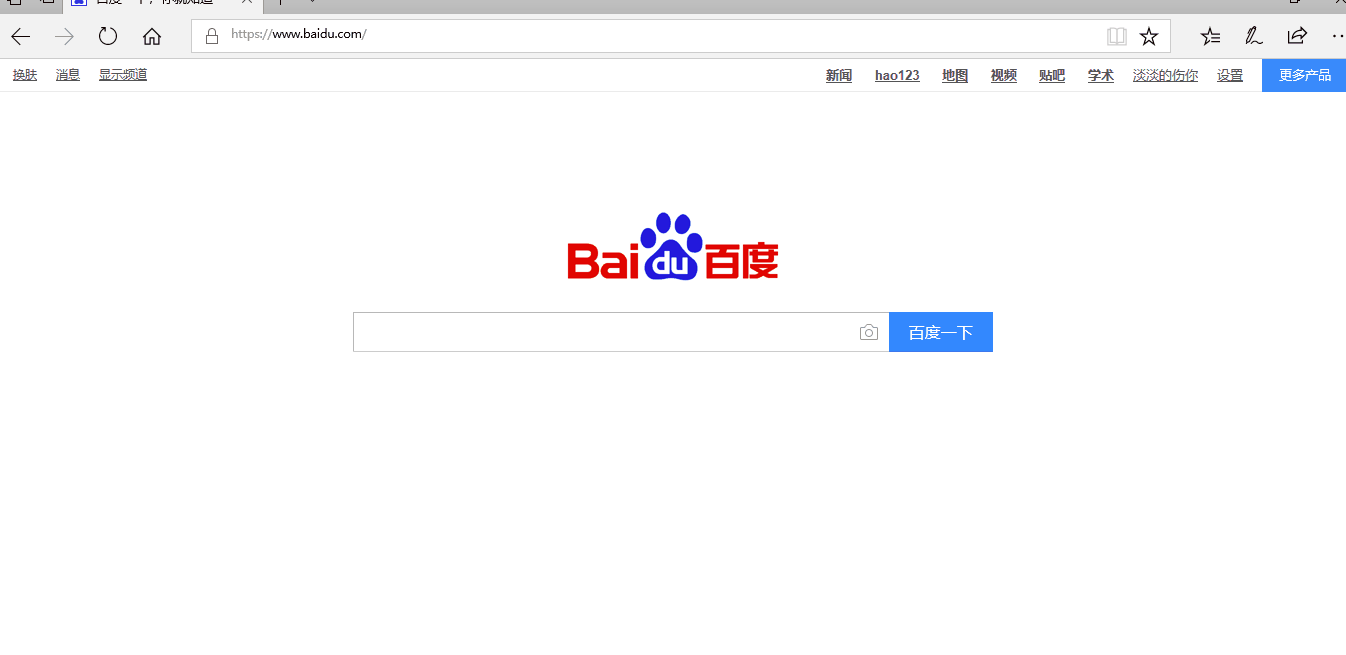Spring Security实现短信登录
文章目录
- 一、理论说明
-
- 1.1 用户名密码登录逻辑
- 1.2 短信验证码登录逻辑
- 二、代码实战
-
- 2.1 SmsAuthenticationToken
- 2.2 SmsAuthenticationFilter
- 2.3 SmsAuthenticationProvider
- hardcode的方式来模拟手机号查询用户信息
- 2.4 成功与失败处理逻辑
- 2.5 SmsCodeAuthenticationSecurityConfig
- 将上述的逻辑加入到一起,放在BrowserSecurityConfig中去
为了省去与本篇主题无关的代码,短信验证码只是一个模拟。如果你需要具体的实际例子,在下面的源码链接中除了包括每一章的代码外,还包括从头到尾的完整整合代码,方便大家参考学习。
一、理论说明
在开始编码前,先理解下短信验证码的实现流程。如果你能对《Spring Security认证过程》这篇文章有一定的了解的话,那么这篇文章的学习你会轻松许多。
1.1 用户名密码登录逻辑
废话不多说,在上一篇文章中,以标准的用户名密码登录为例,讲解了整个认证流程。大致流程如下:
先进入 UsernamePasswordAuthenticationFilter 中,根据输入的用户名和密码信息,构造出一个暂时没有鉴权的 UsernamePasswordAuthenticationToken,并将 UsernamePasswordAuthenticationToken交给 AuthenticationManager 处理。
AuthenticationManager本身并不做验证处理,他通过 for-each 遍历找到符合当前登录方式的一个 AuthenticationProvider,并交给它进行验证处理,对于用户名密码登录方式,这个 Provider 就是 DaoAuthenticationProvider。
在这个 Provider中进行一系列的验证处理,如果验证通过,就会重新构造一个添加了鉴权的 UsernamePasswordAuthenticationToken,并将这个 token 传回到 UsernamePasswordAuthenticationFilter 中。
在该 Filter 的父类 AbstractAuthenticationProcessingFilter 中,会根据上一步验证的结果,跳转到 successHandler或者是failureHandler 。
1.2 短信验证码登录逻辑
我们可以仿照用户名密码登录的逻辑,来实现短信验证码的登陆逻辑。
用户名密码登录有个 UsernamePasswordAuthenticationFilter,我们搞一个 SmsAuthenticationFilter,代码粘过来改一改。
用户名密码登录需要 UsernamePasswordAuthenticationToken,我们搞一个 SmsAuthenticationToken,代码粘过来改一改。
用户名密码登录需要 DaoAuthenticationProvider,我们模仿它也 implenments AuthenticationProvider,叫做 SmsAuthenticationProvider。

我们自己搞了上面三个类以后,想要实现的效果如上图所示。当我们使用短信验证码登录的时候:
- 先经过
SmsAuthenticationFilter,构造一个没有鉴权的SmsAuthenticationToken,然后交给
AuthenticationManager处理。 AuthenticationManager通过 for-each 挑选出一个合适的provider进行处理,当然我们希望这个
provider要是SmsAuthenticationProvider。- 验证通过后,重新构造一个有鉴权的
SmsAuthenticationToken,并返回给
SmsAuthenticationFilter。
4.filter根据上一步的验证结果,跳转到成功或者失败的处理逻辑。
二、代码实战
2.1 SmsAuthenticationToken
首先我们编写 SmsAuthenticationToken,这里直接参考 UsernamePasswordAuthenticationToken源码,直接粘过来,改一改
步骤:
principal原本代表用户名,这里改成mobile,代表了手机号码。- credentials 原本代码密码,短信登录用不到,直接删掉。
SmsCodeAuthenticationToken()两个构造方法一个是构造没有鉴权的,一个是构造有鉴权的。- 剩下的几个方法去除无用属性即可。
import org.springframework.security.authentication.AbstractAuthenticationToken;
import org.springframework.security.core.GrantedAuthority;
import org.springframework.security.core.SpringSecurityCoreVersion;
import java.util.Collection;
/**
* 短信登录 AuthenticationToken,模仿 UsernamePasswordAuthenticationToken 实现
*/
public class SmsCodeAuthenticationToken extends AbstractAuthenticationToken {
private static final long serialVersionUID = SpringSecurityCoreVersion.SERIAL_VERSION_UID;
/**
* 在 UsernamePasswordAuthenticationToken 中该字段代表登录的用户名,
* 在这里就代表登录的手机号码
*/
private final Object principal; //存放认证信息。
/**
* 构建一个没有鉴权的 SmsCodeAuthenticationToken
*/
//mobile:表示手机号。
public SmsCodeAuthenticationToken(String mobile) {
super(null);
this.principal = mobile;
setAuthenticated(false);
}
/**
* 构建拥有鉴权的 SmsCodeAuthenticationToken
*/
public SmsCodeAuthenticationToken(Object principal, Collection<? extends GrantedAuthority> authorities) {
super(authorities);
this.principal = principal;
// must use super, as we override
super.setAuthenticated(true);
}
@Override
public Object getCredentials() {
return null;
}
@Override
public Object getPrincipal() {
return this.principal;
}
@Override
public void setAuthenticated(boolean isAuthenticated) throws IllegalArgumentException {
if (isAuthenticated) {
throw new IllegalArgumentException(
"Cannot set this token to trusted - use constructor which takes a GrantedAuthority list instead");
}
super.setAuthenticated(false);
}
@Override
public void eraseCredentials() {
super.eraseCredentials();
}
}
2.2 SmsAuthenticationFilter
然后编写 SmsAuthenticationFilter,参考 UsernamePasswordAuthenticationFilter的源码,直接粘过来,改一改。
步骤:
- 认证请求的方法必须为POST
- 从request中获取手机号
- 封装成自己的
Authenticaiton的实现类SmsCodeAuthenticationToken(未认证) - 调用
AuthenticationManager的authenticate方法进行验证(即SmsCodeAuthenticationProvider)
public class SmsCodeAuthenticationFilter extends AbstractAuthenticationProcessingFilter {
/**
* form表单中手机号码的字段name
*/
public static final String WU_FORM_MOBILE_KEY = "mobile";
private String mobileParameter = "mobile";
private boolean postOnly = true; //只处理Post请求。
//请求的匹配器。
public SmsCodeAuthenticationFilter() {
super(new AntPathRequestMatcher("/authentication/mobile", "POST"));
}
public Authentication attemptAuthentication(HttpServletRequest request, HttpServletResponse response) throws AuthenticationException {
//是否仅 POST 方式
if (this.postOnly && !request.getMethod().equals("POST")) {
throw new AuthenticationServiceException("Authentication method not supported: " + request.getMethod());
} else {
//取出手机号
String mobile = this.obtainMobile(request);
if (mobile == null) {
mobile = "";
}
//去除空格
mobile = mobile.trim();
//这里封装未认证的Token
SmsCodeAuthenticationToken authRequest = new SmsCodeAuthenticationToken(mobile);
//将请求信息也放入到Token中。
this.setDetails(request, authRequest);
//首先进入方法这里会找到我们自己写的SmsCodeAuthenticationProvider.
//最后将结果放回到这里之后,经过AbstractAuthenticationProcessingFilter,这个抽象类的doFilter,然后调用处理器。成功调用成功处理器,失败调用失败处理器。
return this.getAuthenticationManager().authenticate(authRequest);
}
}
/**
* 获取手机号的方法
* @param request
* @return
*/
protected String obtainMobile(HttpServletRequest request) {
return request.getParameter(this.mobileParameter);
}
//将请求信息也放入到Token中。
protected void setDetails(HttpServletRequest request, SmsCodeAuthenticationToken authRequest) {
authRequest.setDetails(this.authenticationDetailsSource.buildDetails(request));
}
public void setMobileParameter(String mobileParameter) {
Assert.hasText(mobileParameter, "mobile parameter must not be empty or null");
this.mobileParameter = mobileParameter;
}
public void setPostOnly(boolean postOnly) {
this.postOnly = postOnly;
}
public final String mobileParameter() {
return this.mobileParameter;
}
}
2.3 SmsAuthenticationProvider
这个方法比较重要,这个方法首先能够在使用短信验证码登陆时候被 AuthenticationManager挑中,其次要在这个类中处理验证逻辑。

步骤:
- 实现
AuthenticationProvider接口,实现 authenticate() 和 supports() 方法。 supports()方法决定了这个 Provider 要怎么被AuthenticationManager挑中,我这里通过
return SmsCodeAuthenticationToken.class.isAssignableFrom(authentication),处理所有
SmsCodeAuthenticationToken及其子类或子接口。authenticate()方法处理验证逻辑。- 首先将
authentication强转为SmsCodeAuthenticationToken。 - 从中取出登录的 principal,也就是手机号。
- 如果此时仍然没有异常,通过调用
loadUserByUsername(mobile)读取出数据库中的用户信息。 - 如果仍然能够成功读取,没有异常,这里验证就完成了。
- 重新构造鉴权后的
SmsCodeAuthenticationToken,并返回给SmsCodeAuthenticationFilter。
- 首先将
SmsCodeAuthenticationFilter的父类在 doFilter()方法中处理是否有异常,是否成功,根据处理结果跳转到登录成功/失败逻辑。
import org.springframework.security.authentication.AuthenticationProvider;
import org.springframework.security.authentication.BadCredentialsException;
import org.springframework.security.core.Authentication;
import org.springframework.security.core.AuthenticationException;
import org.springframework.security.core.userdetails.UserDetails;
import org.springframework.security.core.userdetails.UserDetailsService;
import org.springframework.web.context.request.RequestContextHolder;
import org.springframework.web.context.request.ServletRequestAttributes;
import javax.servlet.http.HttpServletRequest;
import java.util.Map;
/**
* 短信登陆鉴权 Provider,要求实现 AuthenticationProvider 接口
*/
public class SmsCodeAuthenticationProvider implements AuthenticationProvider {
private UserDetailsService userDetailsService;
@Override
public Authentication authenticate(Authentication authentication) throws AuthenticationException {
SmsCodeAuthenticationToken authenticationToken = (SmsCodeAuthenticationToken) authentication;
String mobile = (String) authenticationToken.getPrincipal();
UserDetails userDetails = userDetailsService.loadUserByUsername(mobile);
// 此时鉴权成功后,应当重新 new 一个拥有鉴权的 authenticationResult 返回
SmsCodeAuthenticationToken authenticationResult = new SmsCodeAuthenticationToken(userDetails, userDetails.getAuthorities());
authenticationResult.setDetails(authenticationToken.getDetails());
return authenticationResult;
}
@Override
public boolean supports(Class<?> authentication) {
// 判断 authentication 是不是 SmsCodeAuthenticationToken 的子类或子接口
return SmsCodeAuthenticationToken.class.isAssignableFrom(authentication);
}
public UserDetailsService getUserDetailsService() {
return userDetailsService;
}
public void setUserDetailsService(UserDetailsService userDetailsService) {
this.userDetailsService = userDetailsService;
}
}
hardcode的方式来模拟手机号查询用户信息
向手机13012345678发送短信验证码3237
2019-11-18 10:35:56.351 INFO 180980 --- [nio-8060-exec-6] c.i.s.c.v.code.ValidateCodeFilter : 校验请求(/authentication/mobile)中的验证码,验证码类型SMS
2019-11-18 10:35:56.351 INFO 180980 --- [nio-8060-exec-6] c.i.s.c.v.code.ValidateCodeFilter : 验证码校验通过
2019-11-18 10:36:11.425 INFO 180980 --- [nio-8060-exec-6] com.imooc.security.MyUserDetailsService : 表单登录用户名:13012345678
2019-11-18 10:36:12.961 INFO 180980 --- [nio-8060-exec-6] com.imooc.security.MyUserDetailsService : 登录用户名:13012345678
2019-11-18 10:36:25.432 INFO 180980 --- [nio-8060-exec-6] com.imooc.security.MyUserDetailsService : 数据库密码是:$2a$10$hC7oYh4G4iUAXrLq3hFZtezWCL07UP9pPwp8zZYPZwPTraV8CCCta
Disconnected from the target VM, address: '127.0.0.1:57718', transport: 'socket'
2019-11-18 10:38:33.638 INFO 180980 --- [nio-8060-exec-6] .s.b.a.ImoocAuthenticationSuccessHandler : 登录成功
开头就说过了,为了方便介绍,写最少的代码,因此这是一个假的短信登录。如果你看这里的 UserDetailsService
的代码话,你会发现它是从数据库中根据 name 获取信息的,我其实就是把用户名来当手机号用。
这里只是一个demo,所以没有写查询数据库的逻辑,只是通过hardcode的方式来模拟查询数据库这个过程,用手机号作为用户名来验证用户信息
因此,如果你想根据数据库中其他字段,例如 phone 来得到用户信息,可以再写一个叫做
SmsUserDetailsService,在这里注入到 provider 中。
2.4 成功与失败处理逻辑
上面最后说到,在 SmsCodeAuthenticationFilter 的父类,会根据验证结果跳转到成功或失败处理逻辑,现在我们就编写下这个的处理。
验证成功处理:
@Component
public class CustomAuthenticationSuccessHandler implements AuthenticationSuccessHandler {
@Autowired
private ObjectMapper objectMapper;
private Logger logger = LoggerFactory.getLogger(getClass());
@Override
public void onAuthenticationSuccess(HttpServletRequest request, HttpServletResponse response, Authentication authentication) throws IOException, ServletException {
logger.info("登录成功");
response.setContentType("application/json;charset=UTF-8");
response.getWriter().write(objectMapper.writeValueAsString(authentication));
}
}
验证失败处理:
@Component
public class CustomAuthenticationFailureHandler implements AuthenticationFailureHandler {
@Autowired
private ObjectMapper objectMapper;
private Logger logger = LoggerFactory.getLogger(getClass());
@Override
public void onAuthenticationFailure(HttpServletRequest request, HttpServletResponse response, AuthenticationException exception) throws IOException, ServletException {
logger.info("登陆失败");
response.setStatus(HttpStatus.INTERNAL_SERVER_ERROR.value());
response.setContentType("application/json;charset=UTF-8");
response.getWriter().write(objectMapper.writeValueAsString(exception.getMessage()));
}
}
2.5 SmsCodeAuthenticationSecurityConfig
下面我们需要把我们自己写的这么多类添加进 Spring Security 框架中,在以往,我们都是直接往 WebSecurityConfig 中加,但是这样会导致 WebSecurityConfig 内容太多,难以维护。
因此我们可以为每种登录方式都建议一个专属于它的配置文件,再把这个配置文件加入到 WebSecurityConfig 中,进行解耦。
因此建立短信验证码登录的配置文件SmsCodeAuthenticationSecurityConfig :
import org.springframework.beans.factory.annotation.Autowired;
import org.springframework.security.authentication.AuthenticationManager;
import org.springframework.security.config.annotation.SecurityConfigurerAdapter;
import org.springframework.security.config.annotation.web.builders.HttpSecurity;
import org.springframework.security.core.userdetails.UserDetailsService;
import org.springframework.security.web.DefaultSecurityFilterChain;
import org.springframework.security.web.authentication.UsernamePasswordAuthenticationFilter;
import org.springframework.stereotype.Component;
@Component
public class SmsCodeAuthenticationSecurityConfig extends SecurityConfigurerAdapter<DefaultSecurityFilterChain, HttpSecurity> {
@Autowired
private UserDetailsService userDetailsService;
@Autowired
private CustomAuthenticationSuccessHandler customAuthenticationSuccessHandler;
@Autowired
private CustomAuthenticationFailureHandler customAuthenticationFailureHandler;
@Override
public void configure(HttpSecurity http) throws Exception {
SmsCodeAuthenticationFilter smsCodeAuthenticationFilter = new SmsCodeAuthenticationFilter();
smsCodeAuthenticationFilter.setAuthenticationManager(http.getSharedObject(AuthenticationManager.class));
smsCodeAuthenticationFilter.setAuthenticationSuccessHandler(customAuthenticationSuccessHandler);
smsCodeAuthenticationFilter.setAuthenticationFailureHandler(customAuthenticationFailureHandler);
SmsCodeAuthenticationProvider smsCodeAuthenticationProvider = new SmsCodeAuthenticationProvider();
smsCodeAuthenticationProvider.setUserDetailsService(userDetailsService);
http.authenticationProvider(smsCodeAuthenticationProvider)
.addFilterAfter(smsCodeAuthenticationFilter, UsernamePasswordAuthenticationFilter.class);
}
}
在这个配置文件中,首先给 SmsCodeAuthenticationFilter 指定了:
AuthenticationManager:不指定这个上面的流程图就断掉了。
指定登录成功/失败处理逻辑,方便其父类调用。
然后指定了 SmsCodeAuthenticationProvider,并指定了 UserDetailsService ,方便在验证处理时候通过 loadUserByUsername() 读取出数据库中的用户信息。
最后将 filter 和 provider 都加入 HttpSecurity 配置中。
将上述的逻辑加入到一起,放在BrowserSecurityConfig中去
下面我们就需要把自己写的 SmsCodeAuthenticationSecurityConfig加入到 SecurityConfig 中了。
首先将 SmsCodeAuthenticationSecurityConfig 注入进来,然后通过 http.apply(xxx) 添加进去。
@Configuration
@EnableWebSecurity
@EnableGlobalMethodSecurity(prePostEnabled = true)
public class WebSecurityConfig extends WebSecurityConfigurerAdapter {
@Autowired
private SmsCodeAuthenticationSecurityConfig smsCodeAuthenticationSecurityConfig;
@Override
protected void configure(HttpSecurity http) throws Exception {
http.apply(smsCodeAuthenticationSecurityConfig).and().authorizeRequests()
// 如果有允许匿名的url,填在下面
.antMatchers("/sms/**").permitAll()
.anyRequest().authenticated()
.and()
// 设置登陆页
.formLogin().loginPage("/login")
// 设置登陆成功页
.defaultSuccessUrl("/").permitAll()
.and()
.logout().permitAll();
// 关闭CSRF跨域
http.csrf().disable();
}
@Override
public void configure(WebSecurity web) throws Exception {
// 设置拦截忽略文件夹,可以对静态资源放行
web.ignoring().antMatchers("/css/**", "/js/**");
}
}
